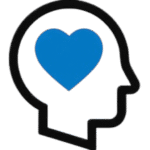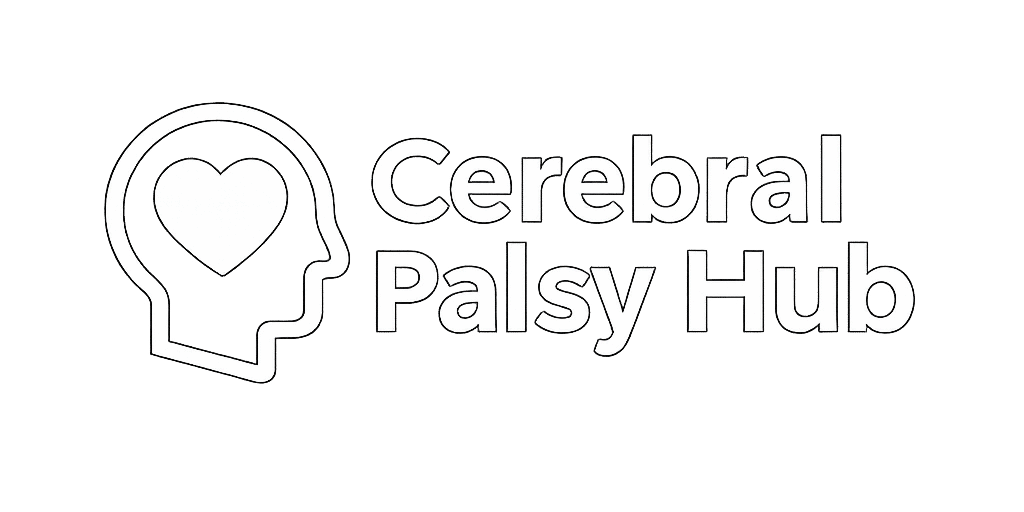Dyskinetic (Athetoid) Cerebral Palsy
Dyskinetic (also known as Athetoid) cerebral palsy is a less common type of cerebral palsy, accounting for about 5–10% of all cases. It develops when brain regions that control movement and muscle tone, such as the basal ganglia are damaged. This results in involuntary and unpredictable motions that disrupt posture and coordination.
What Is Dyskinetic (Athetoid) Cerebral Palsy?
Dyskinetic (Athetoid) cerebral palsy is a less common type of CP affecting about 5–10% of all diagnosed cases. It is caused by damage to the basal ganglia and sometimes the thalamus of the brain which regulate voluntary movement and muscle tone. These areas help control smooth, controlled movement, so when they are injured, children experience involuntary, unpredictable motions that interfere with posture and activity.
Muscle tone may fluctuate between being too stiff and too floppy, which makes movements harder to control. Unlike spastic cerebral palsy, movements may worsen with stress or attempts to move but typically relax during sleep. Children with this type often cannot keep their movements steady, causing sudden twisting, writhing, or jerky motions.
These movements may affect the arms, legs, trunk, or face, and often interfere with walking, sitting, eating, or speaking. Because of the inconsistency in muscle tone, some children appear to “fight against their own body,” making daily tasks exhausting.
There are two main subtypes of dyskinetic CP:
-
Athetoid Cerebral Palsy – slow, writhing movements and shifting muscle tone.
-
Dystonic Cerebral Palsy – stiff, twisting postures that may hold for seconds at a time.
What Causes Dyskinetic (Athetoid) Cerebral Palsy?
Dyskinetic CP occurs when the basal ganglia or thalamus are damaged during early brain development. These structures act like “switchboards,” fine-tuning how much force and speed muscles should use. When they malfunction, the body cannot filter or balance motor signals properly.
-
Basal ganglia damage disrupts smooth, voluntary movement and leads to writhing, twisting, or jerky actions.
-
Thalamus damage can disrupt how movement signals are processed in the brain, worsening coordination and tone shifts.
-
Hypoxic-ischemic injury (lack of oxygen) during birth or pregnancy is one of the most common causes, especially in cases of severe neonatal jaundice or birth complications.
Unlike spastic CP, where stiffness comes from motor cortex injury, dyskinetic cerebral palsy results from damage to brain structures that control and regulate movement, not those that initiate it.
Causes & Risk Factors
Dyskinetic CP occurs when deep brain structures that smooth and regulate movement are injured before birth, during delivery, or shortly afterward. Severe newborn jaundice (kernicterus) is a well-known risk because bilirubin can damage the basal ganglia if not treated promptly.
Other risk factors include reduced oxygen to the brain, infections, brain bleeds, and infant stroke. The timing and severity of the injury shape how movements appear and how the condition progresses.
Key risk factors include:
-
Severe newborn jaundice (kernicterus): If bilirubin levels rise too high and are not treated, the substance can deposit in the basal ganglia and cause permanent damage.
-
Lack of oxygen (hypoxic-ischemic events): Complications during pregnancy or delivery—such as cord prolapse, placental abruption, or prolonged labor—can limit oxygen and harm the brain.
-
Premature birth: Babies born early are more vulnerable to brain bleeds and underdeveloped brain structures, increasing the risk of CP.
-
Brain infections: Conditions like meningitis, encephalitis, or TORCH infections (toxoplasmosis, rubella, cytomegalovirus, herpes) can damage brain tissue.
-
Intracranial bleeding or infant stroke: Disrupted blood flow may injure the basal ganglia or surrounding movement pathways.
-
Low birth weight or multiple births: Babies who are very small or born as twins/triplets face higher risk of developmental complications, including CP.
-
Maternal health issues: Uncontrolled diabetes, thyroid disorders, preeclampsia, or exposure to toxins during pregnancy can contribute to brain injury.
-
Traumatic brain injury after birth: Accidents, falls, or abuse in infancy can damage brain regions linked to movement control.
Having risk factors does not mean a child will necessarily develop dyskinetic CP, but can increase the vulnerability of the nervous system in general.
Signs & Symptoms
The hallmark sign of dyskinetic CP is involuntary movement that interferes with normal muscle use.
Children may show:
-
Fluctuating muscle tone (shifting between stiff and floppy)
-
Twisting, writhing, or jerky movements
-
Difficulty holding still or maintaining posture
-
Facial grimacing, drooling, or tongue movements
-
Trouble speaking clearly (dysarthria) due to involuntary oral muscle actions
-
Movements that worsen with stress, excitement, or voluntary effort, but lessen during sleep
Motor skill milestones, such as crawling or walking, are often delayed because of poor muscle control.
Symptoms by Type of Dyskinetic (Athetoid) CP
Athetoid CP
Children with athetoid CP experience slow, writhing movements that flow continuously, often affecting the arms, legs, and face. Their muscle tone constantly changes, making posture unstable. Fine motor tasks such as writing, buttoning clothes, or feeding are especially difficult. Speech may also be unclear due to uncontrolled tongue and facial movements.
Dystonic CP
In dystonic CP, movements are more stiff and twisting rather than flowing. Children may suddenly assume unusual postures, holding them for several seconds. These episodes can cause discomfort and interfere with balance or walking. Dystonia may also affect the trunk, making sitting upright or controlling head position difficult.
Choreoathetoid Cerebral Palsy
Choreoathetoid CP combines features of both chorea and athetosis. Children experience irregular, jerky movements (chorea) alongside slow, writhing motions (athetosis). The result is unpredictable movement that makes coordination and balance especially difficult. Fine motor tasks, such as writing or buttoning clothes, are often most affected.
Diagnosis
Diagnosis begins with a thorough history, developmental tracking, and physical examination. Doctors look for fluctuating muscle tone, writhing or jerky motions, and difficulty maintaining posture. Unlike spastic CP, reflexes may not be exaggerated, but movement control is clearly impaired.
Imaging tests such as MRI scans often show damage to the basal ganglia or thalamus. Blood tests may be used to rule out conditions like kernicterus. Early diagnosis is important, as starting therapy in infancy can help improve long-term outcomes.
Complications & Associated Conditions
Dyskinetic CP can lead to additional challenges beyond involuntary movement. Common complications include:
-
Feeding and swallowing difficulties due to oral muscle involvement.
-
Speech problems caused by poor control of mouth and tongue.
-
Joint problems from repeated abnormal postures.
-
Dental issues from involuntary jaw clenching or grinding.
-
Hearing or vision problems, sometimes linked to underlying brain injury.
-
Learning difficulties in some cases, though intelligence is often unaffected.
Managing these complications requires a comprehensive care team.
Treatment & Management
There is no cure for dyskinetic cerebral palsy, but treatment that focuses on improving movement control, reducing discomfort, and supporting independence can help improve daily life in the long term.
Physical Therapy
Physical therapy focuses on posture, balance, and controlled movements. Stretching and strengthening exercises help prevent joint stiffness and improve coordination. Aquatic therapy is also often used because water reduces resistance and makes motion smoother.
Occupational Therapy
Occupational therapy helps with daily living skills like dressing, feeding, and handwriting. Adaptive tools like as weighted utensils or stabilizing devices can make activities easier. Therapy often includes training for independence in school and at home.
Speech and Language Therapy
Speech therapy addresses difficulties with speaking, swallowing, and drooling. Therapists may use oral-motor exercises, communication devices, or assistive technology to support clear communication and speech.
Medications for Movement Control
Unlike spastic cerebral palsy, where anti-spasticity drugs are most helpful, children with dyskinetic CP may benefit from medications that reduce involuntary movements, such as:
-
Baclofen (oral or intrathecal pump) for tone regulation
-
Trihexyphenidyl to reduce dystonia and twisting postures
-
Botulinum toxin injections for localized control of problem muscles
Deep Brain Stimulation (DBS)
For severe dystonia, deep brain stimulation - a surgical procedure that sends electrical impulses to the basal ganglia has shown promise in reducing abnormal postures and improving comfort.
Mobility Aids & Assistive Devices
Braces, specialized seating systems, and mobility aids like walkers or wheelchairs may help improve independence and safety. These devices are often customized to balance support with freedom of movement.
Daily Life Impact & Prognosis
Children with dyskinetic cerebral palsy face unique challenges, especially with communication, feeding, and motor control. Some may walk independently, while others rely on mobility aids. Intellectual ability is often normal, but physical symptoms can make it difficult to demonstrate skills or participate fully in school and social settings.
With early and consistent therapy, many children achieve meaningful independence and active participation in their communities. Prognosis varies depending on movement severity, but supportive care can help improve the quality of life.
Legal & Financial Resources
Families may be eligible for assistance programs to cover therapy, adaptive equipment, and medical expenses. Disability benefits and special education services provide crucial support.
In cases where dyskinetic cerebral palsy results from medical errors or malpractice such as untreated jaundice or birth asphyxia, legal options may be available to secure compensation. This funding can help ensure long-term care and stability for your child.
Dyskinetic Cerebral Palsy FAQs
 Written and Medically Reviewed by:
Written and Medically Reviewed by:
Cerebral Palsy Hub Team
Cerebral Palsy Hub was founded to help support children and their families with cerebral palsy and to create a safe space for those affected. We strive to provide the most accurate, up-to-date information, and tools to help give your child the life they deserve.
Last Updated: September 2, 2025
